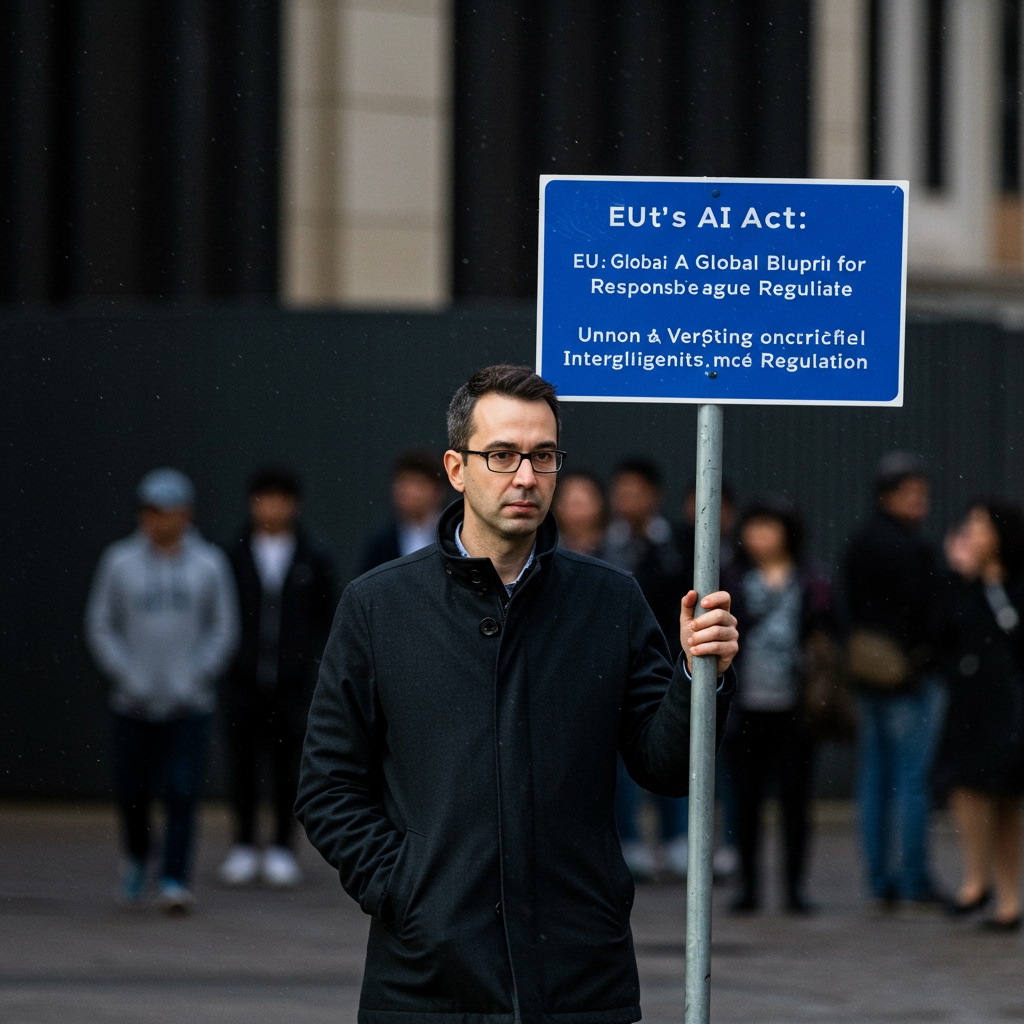EU Parliament Approves Landmark AI Act
STRASBOURG – In a pivotal move poised to shape the future of artificial intelligence development and deployment globally, the European Parliament delivered its final approval to the Artificial Intelligence Act on May 15, 2025. This momentous vote marks the culmination of years of intense negotiations, debates, and revisions among EU institutions and member states, resulting in a piece of legislation hailed as the world’s first comprehensive legal framework for AI.
The Act represents a significant legislative achievement, establishing a harmonized set of rules designed to address the potential risks associated with artificial intelligence while fostering innovation. Its core principle is a risk-based approach, categorizing AI systems based on their potential to cause harm. Systems deemed to pose an ‘unacceptable risk’ are banned outright, such as cognitive behavioural manipulation or social scoring systems used by public authorities. However, the primary focus of the stringent new requirements falls upon AI applications classified as ‘high-risk’.
Defining ‘High-Risk’ AI and Strict Obligations
The legislation meticulously defines what constitutes a ‘high-risk’ AI system. This category includes AI used in critical infrastructure (like managing energy grids or transport networks), law enforcement (such as predictive policing or evaluating evidence), education and vocational training (determining access or evaluation), employment, workforce management, and access to self-employment (e.g., recruitment software, performance evaluation), and critical public services (like credit scoring or dispatching emergency services). Systems within these domains are subject to extensive obligations before they can be lawfully placed on the EU market or put into service.
For developers and deployers of these ‘high-risk’ systems, the requirements are manifold and robust. These include stringent rules around data governance, emphasizing the need for high-quality datasets to minimize bias and ensure accuracy. Human oversight requirements are mandated to ensure that human beings can effectively oversee and intervene in the operation of these powerful systems, preventing potential errors or harms. Furthermore, developers must implement robust cybersecurity measures, ensure systems log activity automatically, and provide clear information to users.
Crucially, ‘high-risk’ AI systems must undergo a mandatory conformity assessment procedure before they can be introduced to the EU market. This assessment evaluates whether the system complies with the Act’s requirements. In many cases, this will involve self-assessment by the provider, though third-party conformity assessments will be required for certain high-risk categories, particularly those used by public authorities or related to law enforcement. Post-market monitoring obligations also apply, requiring continuous evaluation of system performance and risk mitigation.
Implementation Timeline and Global Impact
The final parliamentary approval on May 15, 2025, sets the stage for the Act’s entry into force. Following this approval, the legislation will undergo a final legal-linguistic review before being formally adopted by the EU Council. While the exact date of application will vary by provision, the Act is expected to take full effect gradually over the next 18 to 36 months, with different parts of the regulation becoming applicable at staggered intervals. For instance, bans on unacceptable risk AI systems will apply sooner than the obligations for high-risk systems.
The European Union’s proactive stance in regulating AI is widely seen as setting a global precedent. As the first major jurisdiction to enact such a comprehensive framework, the EU AI Act is anticipated to have a ‘Brussels effect’, influencing regulatory approaches in other countries and shaping global technical standards for AI, much like GDPR did for data privacy. Non-EU companies wishing to offer AI systems or services within the EU market will need to comply with the Act’s provisions, effectively exporting its standards worldwide.
Objectives: Safety, Transparency, and Ethics
The overarching objectives articulated by the EU policymakers are clear: to ensure that AI developed and used within the Union is safe, transparent, and ethical. The Act aims to build trust in AI technologies among citizens and businesses while simultaneously promoting innovation and the uptake of AI. By providing legal clarity and predictability, the EU hopes to foster a favorable environment for AI development that aligns with fundamental rights and democratic values.
While the Act has been largely welcomed by proponents of responsible AI, it has also faced criticism from some industry players concerned about potential burdens on innovation and competitiveness, particularly for smaller enterprises. The challenge now lies in the effective implementation and enforcement of this complex legislation across all EU member states, ensuring consistency and adaptability as AI technology continues its rapid evolution.
The passage of the AI Act on May 15, 2025, marks a significant milestone, positioning the EU at the forefront of global efforts to govern artificial intelligence responsibly. It lays down foundational rules for a technology poised to transform society, emphasizing that innovation must go hand-in-hand with robust safeguards.





